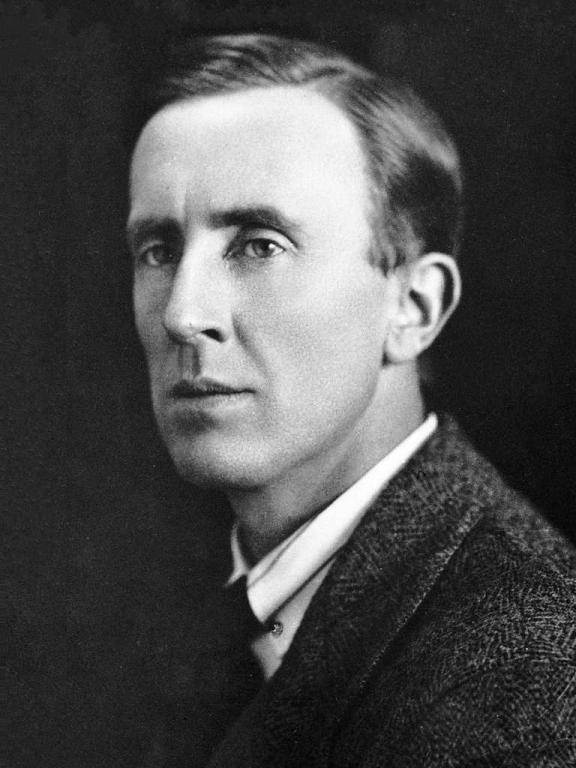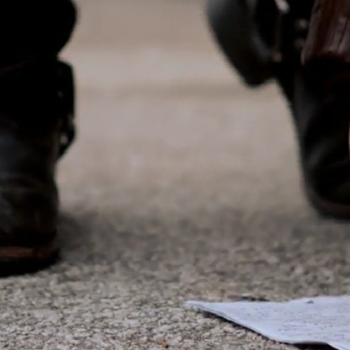Have you read J. R. R. Tolkien’s short story “Leaf by Niggle“? I read it long ago, but just recently it has come up twice for me: in a sermon and in a chapter by Trevor Sutton for a book we are collaborating on. So I read it again. It’s very rich in meaning and implication–see this overview–but, among other things, it’s a profound meditation on vocation.
Specifically, it reflects on the sense of failure in vocation, frustrations when we are distracted from our vocation, what our vocations point to, and what our vocations mean in eternity.
Such topics in their depth perhaps evade mere expository prose, requiring imaginative literary art to do them justice. So you need to read it. But I’ll sketch out the story, with attention to the theme of vocation, though you’ll need to color in the line drawing by reading what Tolkien wrote. (There is a stand-alone edition of Leaf by Niggle. You can also find the story in the collections Tree and Leaf and The Tolkien Reader.)
“Niggle was a painter,” Tolkien begins. “Not a very successful one, partly because he had many other things to do.” Niggle had in mind a grand project: painting a magnificent tree on a huge canvas. The idea came to him while trying to paint a leaf blowing in the wind; the leaf turned into a tree, which in turn needed birds in its branches and a countryside around it, with mountains and far countries glimpsed through its branches.
Niggle’s vision for the tree grew greater and greater, but he struggled to carry it out. For one thing, he was a perfectionist. “He used to spend a long time on a single leaf, trying to catch its shape, and its sheen, and the glistening of dewdrops on its edges. Yet he wanted to paint a whole tree, with all of its leaves in the same style, and all of them different.”
An even greater problem was that he was one of those people who simply couldn’t say no. His neighbors would need his help for something, so he would set aside his paintbrush to take care of it. A particular neighbor, Mr. Parish, had a lame leg, and he was always asking Niggle to help him run errands or fix up his house or do other things for him. Niggle would grumble inside at all of these interruptions when what he really wanted to do was work on his painting–and Mr. Parish was especially annoying because he showed little gratitude–but he had a kind heart and never turned anyone down.
As a result, Niggle never made much progress on his tree. And then he died. His big canvas was used to patch a hole in Mr. Parish’s roof. But someone picked up a scrap of the canvas, liked it, and put it in the town museum: It depicted a single leaf. No tree, just a single leaf. Not much of an artistic legacy, especially after the museum burned down. Not much for a life’s work.
As for Niggle, death took him to Paradise. After quite a bit of symbolic business, this happened:
Before him stood the Tree, his Tree, finished. If you could say that of a Tree that was alive, its leaves
opening, its branches growing and bending in the wind that Niggle had so often felt or guessed, and had so
often failed to catch. He gazed at the Tree, and slowly he lifted his arms and opened them wide.“It’s a gift!” he said. He was referring to his art, and also to the result; but-he was using the word quite
literally.He went on looking at the Tree. All the leaves he had ever laboured at were there, as he had imagined them
rather than as he had made them; and there were others that had only budded in his mind, and many that
might have budded, if only he had had time. Nothing was written on them, they were just exquisite leaves,
yet they were dated as clear as a calendar. Some of the most beautiful-and the most characteristic, the most
perfect examples of the Niggle style-were seen to have been produced in collaboration with Mr. Parish: there
was no other way of putting it.
What he was working towards, the vision he yearned to achieve, is a reality in Heaven. This speaks of art, of which there is much more–especially when you relate this story to Tolkien and his struggle to write and to finish his enormous Middle Earth sagas–but also, I think, to other vocations: All the satisfactions we hope to achieve in them are only beginnings that fall short, but they are foretastes of the feast to come.
More importantly, Niggle sees that all of those “interruptions” in what he wanted to do were part of his bigger vocation. He was loving and serving his neighbor. That’s the purpose of every vocation. Though we often look at our callings in terms of private accomplishments, their true meaning is found in love and service to our neighbors. Even for the annoying Mr. Parish, for whom Niggle sacrifices what is most precious to him, his art.
Niggle learns that what he did for Mr. Parish turns out to be part of his glorious life work that is only disclosed in Heaven. “The most perfect examples of the Niggle style-were seen to have been produced in collaboration with Mr. Parish”!
There is much more to this story, including Tolkien’s hobbitesque take on Dante’s Divine Comedy. Read it and apply it.
Yes, Lord of the Rings is also about vocation. But don’t overlook “Leaf by Niggle.”
Photo: J. R. R. Tolkien (ca. 1925 [when he was 33]) via Picryl, public domain.













